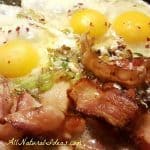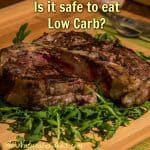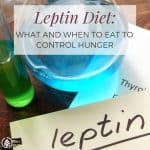Want to lose weight by eating many of the foods that you probably already enjoy? Then consider the whole foods weight loss eating plan.

Interested in losing weight without having to count calories? Are you not the type of person to lose weight using an app? If so, the whole foods weight loss diet may be for you!
Of all the thousands of diets, the whole foods weight loss eating plan is probably the easiest and most enjoyable to follow. You’ve probably heard of the Mediterranean Diet. The Mediterranean Diet is a whole foods way of eating that encourages consuming whole grains, seeds, nuts, healthy oils, fruits and veggies. But as we’ll soon see, the Mediterranean Diet is not necessarily the best whole food diet for weight loss, especially for those who have hormonal imbalances and store body fat easily….
A whole foods diet may be especially beneficial for those who have metabolism disorders, such as obesity. People with obesity have physiological obstacles which impede fat utilization in the cells. In other words, obese people have hormonal imbalances which lead to abnormal fat storage.
Whole foods are at most minimally processed. They have no preservatives, no added sodium or sugar. But not all whole foods are beneficial for weight loss, or more importantly fat loss.
Let’s look at brown rice as an example. Brown rice is a whole food, specifically, a whole grain. Brown rice has vitamins, minerals, and fiber. Fiber helps promote elimination (waste removal). The more waste that’s eliminated, the less you’ll weigh.
But that’s not showing the whole picture. Yes, brown rice is a whole food. But it’s also a carbohydrate. Carbohydrates are the one macronutrient that result in a significant release of the blood-sugar regulating hormone, insulin. It’s great that we have insulin. We need it to direct the blood sugar into the cells. Without insulin, you can have a diabetic coma. That’s why people who have type 1 diabetes need to inject the hormone.
But eating too many carbohydrates, even if they are whole foods, like brown rice, can saturate the cells with sugar. Doing that repeatedly causes insulin resistance. Insulin resistance is when our blood sugar does not get into the cells properly. Insulin resistance can eventually lead to prediabetes of type 2 diabetes.

When the cells can’t store any more sugar, the excess sugar is stored in bundles (glycogen), in the liver, for future use. When the excess sugar isn’t burned, which happens easily when you sit all day on the computer for work, and on the couch watching TV at night, the result is stored body fat.
You can see why eating lots of whole grains if you’re diabetic or obese is a bad idea. Brown rice ranks very high on the glycemic index. The glycemic index is a theoretical value of how rapidly a food raises blood sugar levels. The scale is ranked from 0-100, with 100 representing glucose. The lower the better.
Brown rice ranks relatively high on the glycemic index at 68. While it’s true that if you eat fat with brown rice, the glycemic load will slow the insulin response. But if you’re really looking to get leaner, it’s best to restrict your whole grains.
If you want an easy diet to follow that encourages not only weight loss, but more importantly fat loss, you need a whole foods eating plan that works. Here’s how….
Eat fat!
Natural fats such as avocadoes, olive oil, nuts, seeds, coconut oil, grass-fed butter, pure organic lard (yes, lard!) and other healthy fats are the perfect foods to eat at every meal on a whole foods weight loss diet. And it doesn’t matter whether the fats are saturated or not. Ignore the popular recommendation by many public health officials to restrict saturated fat. (If you want a deeper explanation of why it doesn’t matter if a fat is saturated or not, read this.)
Fats such as coconut oil, which is high in saturated fat (don’t let that fool you into avoiding it; coconut oil is beneficial for weight loss), do not cause a release of insulin. That means that there is no sugar that will be stored as bodyfat.
Another benefit of a whole foods weight loss eating plan, consisting of lots of healthy fats, is that fats help keep you full. One gram of a fat like coconut oil contains over twice the amount of calories as carbohydrates (and protein). That means that even though fats are more calorically-dense, you’ll likely eat less because you’ll feel full and will likely not be tempted to eat quick-burning carbohydrate- and high-sugar snacks like ice cream.
Let’s emphasize this point a little more by revisiting brown rice. Brown rice, remember, is a whole food, but it’s a grain. If you eat a large plate of brown rice and nothing else with it, you know what’s likely to happen an hour or two later?
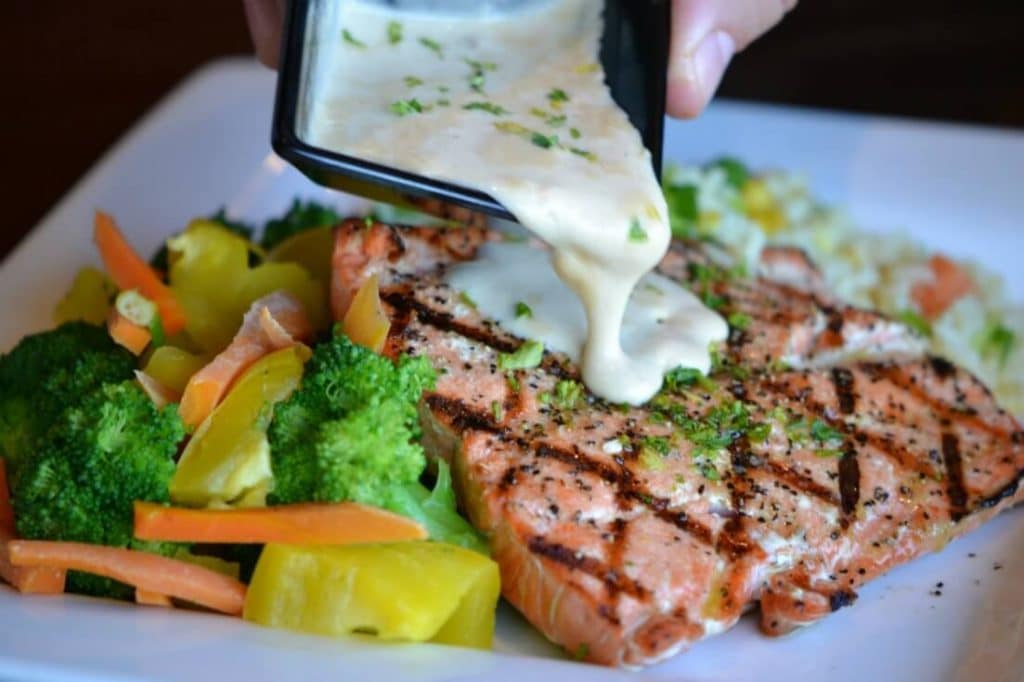
Because you didn’t eat enough natural fat (or protein), your body will burn up the rice and store the blood sugar in the liver for future use. This stored sugar causes your midsection to expand. You’ll also be likely tempted to eat more carbohydrates. Cravings for junk food arise when a meal contains too many carbohydrates and not enough dietary fat.
If your plate consists of a bed of green veggies like steamed spinach with olive oil, avocado, sunflower seeds (unsalted and raw, not roasted), a handful of blueberries, a 3 oz. piece of organic chicken thigh, and if you want, even a little bit of brown rice, you’ll likely be satisfied and won’t crave a snack.
And if you do crave something sweet, a whole food weight loss diet allows natural fruits. If you’re able to follow a whole food diet for several weeks, you’ll be amazed at how sweet a handful or two of berries tastes. Artificial sweets will no longer satisfy you; you’ll be disgusted by how they taste!
Protein
Protein is essential for repairing muscle tissue, especially post-resistance training exercise (weight lifting), which hopefully you’re doing at least 2-3 times per week to encourage lean muscle mass. But too much protein is problematic in at least a couple ways.
High-protein diets can be strenuous on the kidneys. Protein also causes the pancreas to release insulin, albeit far less than simple carbohydrates like white flour and sugar. Nonetheless, if you’re trying to lose weight, or more importantly, shed bodyfat, you’ll want to limit yourself to a moderate amount of protein at every meal. Examples would be two eggs for breakfast, a fist-sized piece of chicken or fish for lunch, and another similar-sized portion of wild lean, grass-fed/pasture-raised protein for dinner.
Safe carbohydrates to eat on a whole foods weight loss eating plan
Don’t be terrified of carbohydrates! You need to eat them even on a whole foods weight loss eating plan. But most of the carbs should come from whole pieces of fruit and organic vegetables (especially green leafy veggies). You can have a small amount (fist-sized) of grains like wild rice and quinoa (technically, quinoa is not a grain, but we’ll include it as one; it’s a seed, some even argue it’s a fruit!).
Try to limit fruits that are high in sugars, such as kiwi fruit and dates. And try to limit veggies that are high in starches such as potatoes. Starches easily convert into sugars. Even though potatoes are whole foods, they can cause the liver to store the excess, unused sugar as body fat.
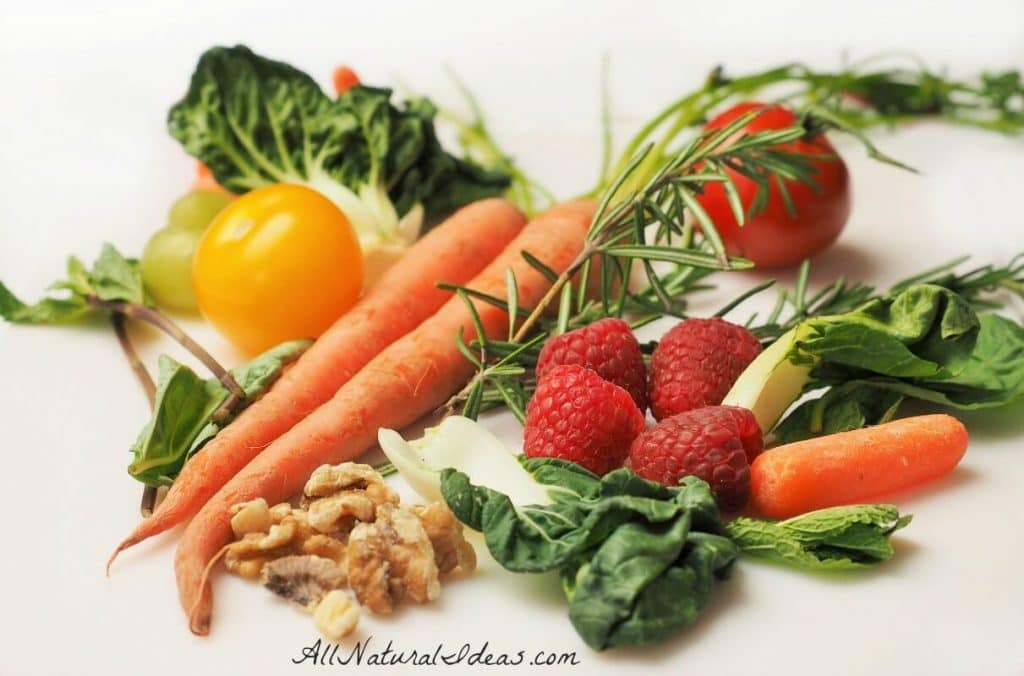
Looking for other diets for weight loss? Check out:
Stillman Diet Results: Fast Weight Loss But Healthy?
Why Do Low Carb Diets Work So Well?
Ketogenic Lifestyle: How the Keto Diet Works

